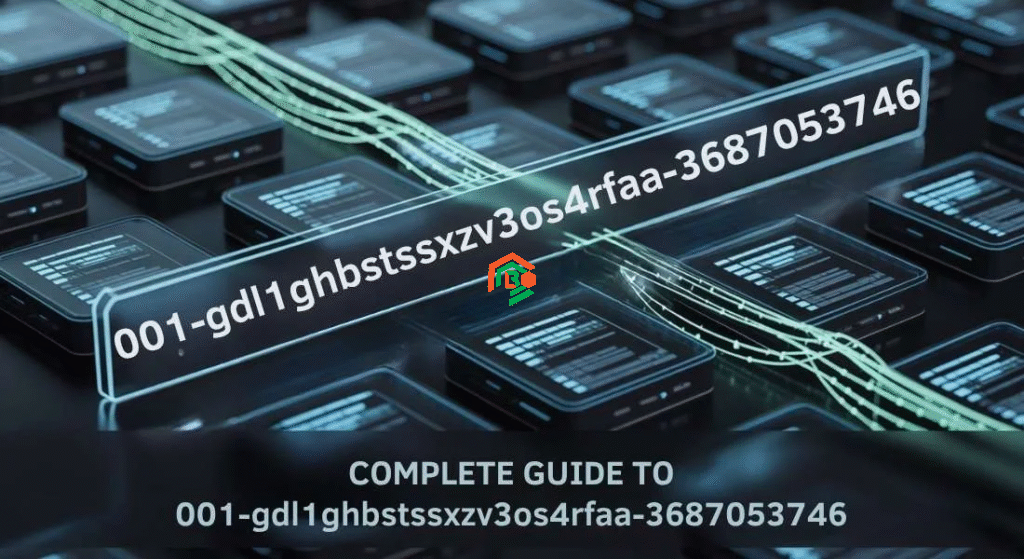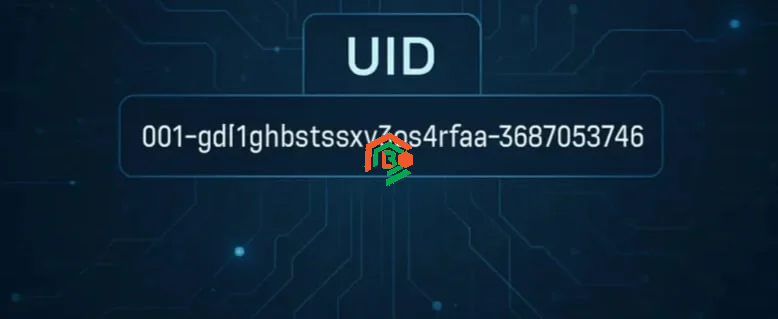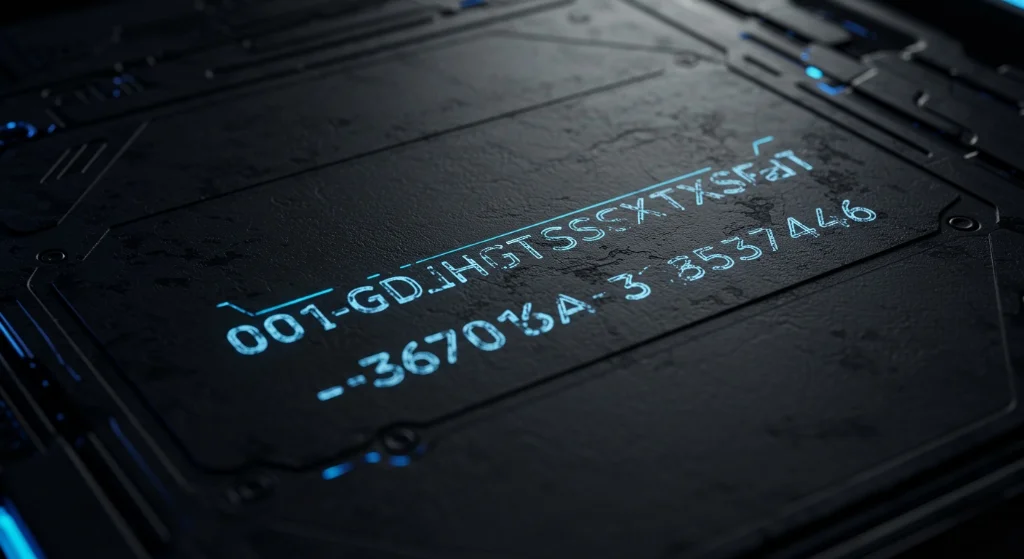You might have seen a strange code like 001-gdl1ghbstssxzv3os4rfaa-3687053746 while browsing online or in a message. It may look confusing, but don’t worry. In this guide, we’ll explain everything about it in the simplest way possible—even a 10-year-old can understand it!
What Is 001-gdl1ghbstssxzv3os4rfaa-3687053746?
The code 001-gdl1ghbstssxzv3os4rfaa-3687053746 is a string of letters and numbers that looks like a random mix of characters. But this kind of code is often used in online tracking links, digital campaigns, URL parameters, or sometimes by scammers trying to make something look official. While it might seem like a secret or technical code, it’s not always something important or useful to a regular internet user. These types of codes can show up on websites, emails, or even text messages. Most of the time, they’re not dangerous by themselves—but they can lead to places that might not be safe.
Many people see this code in the United States, especially when they’re browsing online or using websites with ads or unknown links. This specific pattern is not a product name, not a promo code, and not a government-issued number. It’s just a trackable or redirect link identifier, often used behind the scenes in digital advertising and sometimes even in phishing attempts. You don’t need to memorize the code or treat it like something special. But it’s important to know what it is and how to be safe around such links.
Why Do People Search for This Code?
People search for 001-gdl1ghbstssxzv3os4rfaa-3687053746 because they see it somewhere online and get curious—or confused. Imagine you’re reading an email or clicking a pop-up ad, and suddenly you see this long string of numbers and letters. You might think it’s a code for something, like a promo, a secret offer, or even a tech feature. In most cases, it’s none of those things. Many users turn to Google to ask, “What does this mean?” or “Is this safe to click?” Some also search for it because their antivirus flagged it or they accidentally clicked on a suspicious link. It’s natural to be cautious, and that’s a good thing! Searching helps users make sure they’re not falling into a trap or clicking on a scammy link. In fact, because this code is seen a lot in U.S.-based browsing activities, it’s often connected to advertisements, pop-ups, affiliate marketing, or unknown third-party redirects.
Is It Safe to Click on 001-gdl1ghbstssxzv3os4rfaa-3687053746?
The short answer? It depends. Not all codes or links that look strange are dangerous, but when you come across a code like 001-gdl1ghbstssxzv3os4rfaa-3687053746, it’s smart to be careful. Sometimes these links are used by companies to track clicks on ads. But scammers also use similar-looking codes to hide dangerous websites. If you click without checking, you might end up on a site that tries to trick you into giving personal information or downloading something harmful. It’s always better to stay safe and know what to look for before clicking.

Check the Source
One of the first things you should do is check where you saw the code. Did it come in a random email or text? Was it on a website you trust? If it came from an unknown source or looks out of place, don’t click on it. Reliable sources usually don’t send mysterious codes without explaining what they are. If you’re not sure where it came from, it’s best to stay away.
Use a Link Scanner
There are free online tools you can use to check if a link is safe. Just copy the code or the full URL and paste it into a link scanner like VirusTotal or Google Safe Browsing. These tools will tell you if the link has been reported as dangerous or if it leads to a suspicious site. This only takes a few seconds and can save you from a big problem later.
Ask for Help
If you’re not sure whether the code is safe, ask someone you trust. You can ask a tech-savvy friend, your parents, or even post the question in an online safety forum. It’s okay not to know everything—what matters is staying safe. A second opinion can give you the confidence to know whether it’s okay to proceed or not.
Can This Code Be a Scam?
Yes, 001-gdl1ghbstssxzv3os4rfaa-3687053746 can possibly be connected to a scam, especially if it’s part of a suspicious message or shows up in a pop-up trying to get you to click something fast. Scammers love to use confusing codes like this to hide their real intent. They may promise prizes, fake job offers, or even fake warnings about your device just to trick you into clicking. Once you click, the site could try to install malware, steal personal data, or redirect you to shady pages. That’s why you should never click such codes without verifying their source. Even though some codes are used for tracking in legitimate marketing, scammers take advantage of this technique too.
What to Do If You Clicked It by Mistake
If you already clicked on 001-gdl1ghbstssxzv3os4rfaa-3687053746 by accident, don’t panic. First, close the tab or browser window that opened. Next, clear your browser history and cache. If the site asked you to download anything, do not open the file. Delete it immediately. Run a full antivirus or anti-malware scan on your device. Most antivirus tools can detect and remove harmful software if you act quickly. Also, if you entered any personal information, like your email, phone number, or password, consider changing your passwords right away and enabling two-factor authentication. It’s also smart to keep an eye on your email or accounts for strange activity.
How to Tell If a Code Is Good or Bad
There are several ways to figure out whether a code like 001-gdl1ghbstssxzv3os4rfaa-3687053746 is safe or shady. You just need to look carefully and use some common sense.

Look at the URL
Does the code come from a website you know and trust? For example, if the full link is something like “example.com/001-gdl1ghbstssxzv3os4rfaa-3687053746,” and you trust the domain example.com, then it’s more likely to be safe. But if the domain is strange, like “freesurveys-win-big-money.biz” or anything that looks fake, then be careful. Always check what’s before the first “.com” or “.net”—that’s the actual domain name.
Read Online Reviews
Before clicking, search online to see if others have seen the same code. Just type “001-gdl1ghbstssxzv3os4rfaa-3687053746 scam” or “001-gdl1ghbstssxzv3os4rfaa-3687053746 safe” in Google. You’ll often find forum posts or blog articles where people talk about their experience with the link. If many people are saying it’s dangerous, then it probably is. Reviews and warnings from others are a great way to stay safe.
Is This Code Useful for Anything?
Not really. This code isn’t something you can use like a password or discount coupon. It’s not a product ID or a login code. It doesn’t unlock anything valuable or secret. So if you were hoping this was some kind of hidden access code—sorry, it’s not. In most cases, codes like this are used behind the scenes in ad tracking or affiliate marketing links, and they’re not meant for you to use directly. If someone tells you it’s something special, they might be trying to trick you.
Thoughts on 001-gdl1ghbstssxzv3os4rfaa-3687053746
The internet is full of weird and random codes like 001-gdl1ghbstssxzv3os4rfaa-3687053746, and most of the time, they’re not helpful to regular users. You might see them in emails, pop-ups, social media posts, or random websites. The best thing to do is treat all strange codes with caution. While some are harmless, others can lead to scams or viruses. Always take a moment to stop and check before clicking anything unusual. It’s better to be safe than sorry, especially online.
The Bottom Line
The code 001-gdl1ghbstssxzv3os4rfaa-3687053746 may seem mysterious, but it’s nothing magical or secret. It’s likely part of a tracking or redirect link used by marketers or—worse—scammers. If you ever see it, the best thing you can do is stay alert. Don’t click links that look suspicious. Always double-check the source, scan unknown links, and ask for help if you’re unsure. Your online safety is important, and being smart about what you click is the first step to protecting yourself. Remember, it’s okay to ask questions and look things up—just like you’re doing now. Stay safe, be smart, and never trust a random code without knowing what it really is.


